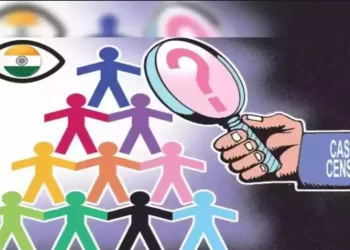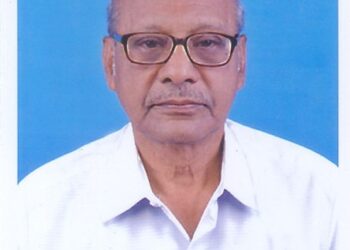Dr. Justice A.K. Rajan
Former Judge
Madras High Court
All over the world, from time immemorial, the stronger section of people had oppressed the numerically or otherwise weaker section. There were different types of or bases for such oppressions. In some parts of the world, it was slavery and in some areas, it was based on colour and in India, it was based on caste. A caste is nothing but a social class – a socially homogenous class. It is permanent in nature and it cannot be changed by any act of an individual. It is based on various factors like a class, a race or a racial unit; it is governed by his birth in a family; it has nothing to do with wealth. It is prevalent not only among Hindus but exists among Muslims and Christians as well.
There are four essential features of the caste system which maintained its home hierarchical; (1) hierarchy (2) commensality; (3) restrictions on marriage; and (4) hereditary occupation. Most of the castes are endogamous groups. Intermarriage between two groups is impermissible.
In Vasant Kumar’s case, the Supreme Court, speaking through Justice Venkataramaiah and Justice Chinnappa Reddy had observed that “caste is a very deep rooted idea in our Indian society and it has traversed even the barriers of religion…………. It cannot be whisked away merely because we want to eliminate caste………..” Dr.Ambedkar, in the Constituent Assembly, has stated that a caste has ingrained class and it was mainly this class, the Constituent Assembly had in mind while enacting Article 16(4) – though not exclusively. The Supreme Court in Mandal Judgment also has recognized that the caste system is prevailing even among Muslims and Christians. That is, among the vast majority of the people of India, caste distinction exists even today.
The Constitution of India, in Article 16(4) provides as follows:
16. Equality of opportunity in matters of public employment—
……………….
(4) Nothing in this article shall prevent the State from making any provision for the reservation of appointments or posts in favour of any backward class of citizens which, in the opinion of the State, is not adequately represented in the services under the State.
According to this provision, posts in government services can be reserved for the “backward classes”, which does not have adequate representation. In a democratic country like India, the oppression that was practised for centuries together, cannot be allowed to continue. Recognizing the hardships meted out by certain communities over thousands of years and in order to ensure their social uplifting, certain positive sections were initiated by the framers of the Constitution. One such action is providing reservation in government employments.
Though in Art.16(4), the word “backward classes of citizens” is used, in Art.15(4), the words “socially and educationally backward classes of citizens” are subsequently used. Art.15(4) reads as follows:
Art.15. Prohibition of discrimination on grounds of religion, race, caste, sex or place of birth —
…………………
(4) Nothing in this article or in clause (2) of Article 29 shall prevent the State from making any special provision for the advancement of any socially and educationally backward classes of citizens or for the Scheduled Castes and the Scheduled Tribes.
Only under this clause, seats in educational institutions are reserved for OBCs and SC/STs, which were upheld by the Supreme Court right from Balaji’s case.
In Mandal case, the Supreme Court, following its earlier decisions, has held that for determining “backward classes”, caste can be the basis. Seven of the nine judges have approved the view that caste can be the basis for identifying backward classes. Justice Jeevan Reddy in his common judgement has recognized that in pre-independent India, the expressions “class” and “caste” were used interchangeably and that caste was understood as an enclosed class. Dr.Ambedkar, while piloting the bill of the First Amendment to the Constitution, has stated that backward classes “are nothing but a collection of certain castes”. Justice Jeevan Reddy concludes that the word ‘community’is lower than “caste” and the word ‘community’ meant not only castes wherefrom they may be found but also other groups, classes and sections among the populace. He has further stated in the judgement that the word ‘class’ in Art.16(4) is used only in the sense of “social class” as distinct from the “class” in Marx’ view.
The Supreme Court in Periakaruppan vs. State of Tamil Nadu (1971) held that there are numerous castes in the country and to ignore their existence is to ignore the facts of life; in State of Andhra Pradesh vs. Balaraman (1972), it was held that –
“………………..If after collecting the necessary data it is found that the caste as a whole is socially and educationally backward, the reservation made of such persons will have to be upheld notwithstanding the fact that a few individuals in that group may be both socially and educationally above the general average”
That is, the Supreme Court has stated as early as 1972 that collection of data is necessary.
Justice Jeevan Reddy had further observed in Mandal Judgment
“caste can be and quite often is the social class in India. If it is backward society, it will be a backward class. It is neither possible nor advisable for the Court to lay down any procedure or method. It must be left to the authority to identify.Identification of backward classes can certainly be done with reference to castes, and along with other groups, classes and sections of people.
The Constitution was amended whereby Panchayat and Municipalities were also brought under the Constitution. Now clause(6) of Articles 243.D and 243.T, which are identical except the word ‘Panchayat’ or ‘Municipality’, enable the State Legislature to reserve seats or posts of Chairpersons in favour of backward classes of citizens, which reads as follows:
(6) Nothing in this Part shall prevent the Legislature of a State from making any provision for reservation of seats in any Municipality or offices of Chairpersons in the Municipalities in favour of backward class of citizens.
The State Legislatures have been conferred with the power to make law providing for such reservation.
Therefore, the identification of backward “class” becomes very important. To identify such classes, “Caste” plays a very important role. Thus, in the decision making process of reserving seats or posts of Chairperson or Presidents in the Municipalities or Panchayats; for the reservation of posts in Government services as well as for reservation of seats in the educational institutions and also for making any other special provision for the advancement of socially and educationally backward classes of citizens, the identification of the backward class is necessary. In case of government services, the Government has to take a decision also on ‘adequate representation’ of the backward classes.
The Supreme Court in Mandal case has ruled out the Identification of backward “classes”. It said that since caste represents an existing, identifiable, social groups spread over an overwhelming majority of the country’s population, “we may well begin with castes”. Therefore, caste cannot be ignored. Therefore, citizens should be enumerated caste-wise for the purpose of reservation under Articles 16(4), 15(4) as well as 243 D and 243 T.
Advancement of Backward Classes (BCs) in Tamil Nadu, thanks to successive governments from 1950 onwards and more particularly to the Dravidian Parties, cannot be compared with their advancement in other States in India, especially the northern States. In Tamil Nadu, backward classes are comparatively advanced; from that it can not be concluded that the advancement of backward classes is similar throughout India. People in most part of North India, it is said, are not even aware of the ambit or scope of the beneficial provisions contained in Articles 15(4) and 16(4).
When the Government of India reserved 27 per cent of seats for SEBCs in central educational institutions to the year 2006-07, it was challenged by one Ashok Kumar Thakur before the Supreme Court on the ground that such reservation was impermissible. The main argument advanced in that case was that the OBCs were not enumerated after 1931 and therefore, there was no reliable data on the total population of OBCs in India. It was also argued that the population of backward classes is very much lower than 27 per cent and therefore, it was excessive reservation. It was also contended that in the absence of statistics, it cannot be accepted that OBC population was 52 per cent as claimed by the OBC groups though Government of India had accepted the Mandal report. Justice ArijitPasayal and Justice Thakkar, in that judgement have observed that “there is no supportable data for this proposition” in spite of the fact that the Supreme Court in Mandal case had accepted the conclusions of the Mandal Report on the population of OBCs.
Thus, for fixing the quantum of reservation, caste enumeration becomes necessary. In order to justify and to defend the cases before the Supreme Court whenever any reservation is made by the State for OBC, whatever be the percentage of reservation (whether 27 per cent, 50 per cent or 69 per cent), the statistics of Other Backward Classes is necessary. The official statistics can be collected only in the census by enumerating the caste of each and every individual. Therefore, for very many reasons, enumeration of citizens by castes is necessary and imperative. Only then, the inequalities among the people or oppressions suffered by such of those communities over centuries can be rectified by appropriate remedial measures or special arrangements for their advancement.
It is true that after 1931, there was no caste enumeration till independence. After independence also, such enumeration was not done for the reason that it will perpetuate the caste system. Only after Supreme Court started asking for the “data” on the conditions and on the numerical strength of OBCs, the political parties started asking for enumeration by caste. In the absence of official data, it has become very difficult to defend, even the policy decisions of the Governments and actions initiated for the advancement of OBCs and satisfy the courts, as the onus is now on the Government to justify their action with data. For these reasons, ultimately the Government of India is now considering caste-wise enumeration of Backward Classes as done in the case of SC/ST.
The Times of India (Chennai edition) dated 10.5.2010 has recorded as follows:
“A fresh OBC count, last done in 1980 and since extrapolated by Mandal report at 52 per cent, will dictate policies where population of backward castes forms the basis for political demands. The implications can be far reaching as OBC count becomes “official”. Financial allocations for OBC welfare may see a change, possibly a hike. In the absence of data on OBCs, allocations on schemes like scholarships are made on the basis of estimates, as noted by a parliamentary standing committee.
But the bigger implication could be for reservations. While the SC verdict on Mandal commission settled the OBC quota at 27 per cent by setting an upper ceiling on quota at 50 per cent, the arrival of fresh numbers can see a demand to make quota in proportion to population.”
This statement is and also should be an answer to those who oppose caste-wise enumeration. The caste-wise enumeration would help the advancement of Backward classes. That will not perpetuate castes, as the Supreme Court has repeatedly held that educational and social advancement will eradicate caste discrimination. That is one of the ultimate goals of the Constitution of India.
Once the caste-wise enumeration is made, the PILs now filed before the Supreme Court, whenever any special arrangement is made for the advancement of SEBCs will also come to an end as there will be no more scope for the arguments based on the absence of data of statistics. On the other hand, it will help all sections of people to understand the justification of the claim made by the OBCs.
Just as in the case of Scheduled Castes and Schedule Tribes, the population of Backward Classes also should be enumerated caste-wise officially. That will go a long way in alleviating the sufferings of the OBCs and be helpful for the real and effective advancement of OBCs. That will go a long way also in confining and controlling extremist activities of the frustrated younger generation. It must not be lost sight of that the absence of extremist activities in Tamil Nadu is mainly due to the overall advancement of all the sections of the community in the State, thanks to the steps taken by the successive governments from independence, in particular the Dravidian Parties.









